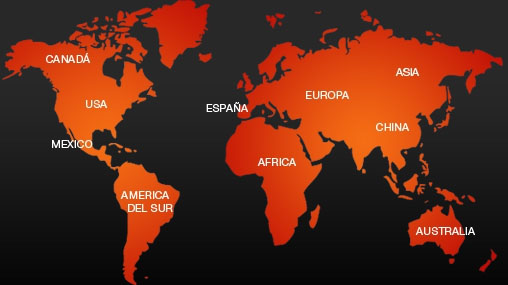- Inicio Acerca de RM Minerales
- Galería de fotos Blog RM Contacto
- Microscopia e instrumentos Pedidos Aviso legal
Copyright 2010-2025
www.rosellminerals.com



Recientemente han aparecido en el mercado ejemplares de escapolita de origen marroquí. Los análisis que hemos realizado de varios ejemplares nos indican que se trata de marialita, ya que la proporción de Na (marialita, Na₄Al₃Si₉O₂₄Cl) es superior a la de calcio (meionita, Ca₄Al₆Si₆O₂₄CO₃), además se detecta la presencia de cloro. Podemos observar que la proporción de Ca es bastante alta por lo que nos encontramos en un término medio de la serie marialita-meionita.
Los cristales se presentan como prismas tetragonales truncados por el pinacoide basal y la bipirámide de primer orden. Transparentes a translúcidos y algunas inclusiones. Presentan cierta fluorescencia bajo la lus UV-OL. Enviaremos los análisis al comprador.
Recientemente han aparecido en el mercado ejemplares de escapolita de origen marroquí. Los análisis que hemos realizado de varios ejemplares nos indican que se trata de marialita, ya que la proporción de Na (marialita, Na₄Al₃Si₉O₂₄Cl) es superior a la de calcio (meionita, Ca₄Al₆Si₆O₂₄CO₃), además se detecta la presencia de cloro. Podemos observar que la proporción de Ca es bastante alta por lo que nos encontramos en un término medio de la serie marialita-meionita.
Los cristales se presentan como prismas tetragonales truncados por el pinacoide basal y la bipirámide de primer orden. Transparentes a translúcidos y algunas inclusiones. Presentan cierta fluorescencia bajo la lus UV-OL. Enviaremos los análisis al comprador.
Recientemente han aparecido en el mercado ejemplares de escapolita de origen marroquí. Los análisis que hemos realizado de varios ejemplares nos indican que se trata de marialita, ya que la proporción de Na (marialita, Na₄Al₃Si₉O₂₄Cl) es superior a la de calcio (meionita, Ca₄Al₆Si₆O₂₄CO₃), además se detecta la presencia de cloro. Podemos observar que la proporción de Ca es bastante alta por lo que nos encontramos en un término medio de la serie marialita-meionita.
Los cristales se presentan como prismas tetragonales truncados por el pinacoide basal y la bipirámide de primer orden. Transparentes a translúcidos y algunas inclusiones. Presentan cierta fluorescencia bajo la lus UV-OL. Enviaremos los análisis al comprador.
Recientemente han aparecido en el mercado ejemplares de escapolita de origen marroquí. Los análisis que hemos realizado de varios ejemplares nos indican que se trata de marialita, ya que la proporción de Na (marialita, Na₄Al₃Si₉O₂₄Cl) es superior a la de calcio (meionita, Ca₄Al₆Si₆O₂₄CO₃), además se detecta la presencia de cloro. Podemos observar que la proporción de Ca es bastante alta por lo que nos encontramos en un término medio de la serie marialita-meionita.
Los cristales se presentan como prismas tetragonales truncados por el pinacoide basal y la bipirámide de primer orden. Transparentes a translúcidos y algunas inclusiones. Presentan cierta fluorescencia bajo la lus UV-OL. Enviaremos los análisis al comprador.
Piñas de cristales de aragonito, muy brillantes y definidos. Se conocen en la zona como "piedras sputnik" (sic) por su aspecto. Presentan una zonación de color en superfície, entre el gris y el marrón. Són flotantes. Una curiosidad marroquí.
Piña de cristales de aragonito, muy brillantes y definidos. Se conocen en la zona como "piedras sputnik" (sic) por su aspecto. Presentan una zonación de color en superfície, entre el gris y el marrón. Són flotantes. Una curiosidad marroquí.
Piña de cristales de aragonito, muy brillantes, con transparencia y definidos. Se conocen en la zona como "piedras sputnik" (sic) por su aspecto. Presentan una zonación de color en superfície, entre el gris y el marrón. Són flotantes. Una curiosidad marroquí.
Piña de cristales de aragonito, muy brillantes y definidos. Se conocen en la zona como "piedras sputnik" (sic) por su aspecto. Presentan una zonación de color en superfície, entre el gris y el marrón. Són flotantes. Una curiosidad marroquí.
Estos ejemplares de prehnita son una novedad de la feria Mineralexpo Barcelona-Sants 2022. Se trata de agregados globulares y en gavilla de cristales, muy brillantes, translúcidos y de un color verde muy uniforme. En ocasiones se acompañan de pequeños cristales aciculares de actinolita. Proceden de una localidad cercana a Boulemane.
Estos ejemplares de prehnita son una novedad de la feria Mineralexpo Barcelona-Sants 2022. Se trata de agregados globulares y en gavilla de cristales, muy brillantes, translúcidos y de un color verde muy uniforme. En ocasiones se acompañan de pequeños cristales aciculares de actinolita. Proceden de una localidad cercana a Boulemane.
Estos ejemplares de prehnita son una novedad de la feria Mineralexpo Barcelona-Sants 2022. Se trata de agregados globulares y en gavilla de cristales, muy brillantes, translúcidos y de un color verde muy uniforme. En ocasiones se acompañan de pequeños cristales aciculares de actinolita. Proceden de una localidad cercana a Boulemane.
Drusa de cristales de cuarzo, entre lechosos a hialinos en las puntas, con cierta tonalidad rojiza. Procede de una localidad marroquí desconocida en colecciones, situada en la zona de Boulemane, al norte de Aouli. Formado entre rocas volcánicas.
Estos ejemplares de pirolusita que reemplaza parcialmente a manganita, procede de una localidad aún no descrita en la bibliografía mineralógica. Se trata de un yacimiento situado en la provincia de Boulemane, en la región de Fez-Meknés, a una decena de kilómetros de las conocidas minas de Aouli. Se trata de una formación muy parecida a la de Imini (cerca de Ouarzazate). Estos yacimientos de manganeso, tanto los de Imini como el de la zona de Boulemane, se formaron en un sistema de cavidades kársticas. Asociados a dolomías marinas poco profundas del Cretácico y que actualmente forman mantos subhorizontales recortados por la erosión que se superponen a zonas de rocas volcánicas. Los minerales de manganeso se encuentran en brechas de dolomías y arcillas ferruginosas. Hemos realizado estudios por difracción de RX que nos demuestran la presencia de ambas especies: manganita y pirolusita.
Estos ejemplares de pirolusita que reemplaza parcialmente a manganita, procede de una localidad aún no descrita en la bibliografía mineralógica. Se trata de un yacimiento situado en la provincia de Boulemane, en la región de Fez-Meknés, a una decena de kilómetros de las conocidas minas de Aouli. Se trata de una formación muy parecida a la de Imini (cerca de Ouarzazate). Estos yacimientos de manganeso, tanto los de Imini como el de la zona de Boulemane, se formaron en un sistema de cavidades kársticas. Asociados a dolomías marinas poco profundas del Cretácico y que actualmente forman mantos subhorizontales recortados por la erosión que se superponen a zonas de rocas volcánicas. Los minerales de manganeso se encuentran en brechas de dolomías y arcillas ferruginosas. Hemos realizado estudios por difracción de RX que nos demuestran la presencia de ambas especies: manganita y pirolusita.
Estos ejemplares de pirolusita que reemplaza parcialmente a manganita, procede de una localidad aún no descrita en la bibliografía mineralógica. Se trata de un yacimiento situado en la provincia de Boulemane, en la región de Fez-Meknés, a una decena de kilómetros de las conocidas minas de Aouli. Se trata de una formación muy parecida a la de Imini (cerca de Ouarzazate). Estos yacimientos de manganeso, tanto los de Imini como el de la zona de Boulemane, se formaron en un sistema de cavidades kársticas. Asociados a dolomías marinas poco profundas del Cretácico y que actualmente forman mantos subhorizontales recortados por la erosión que se superponen a zonas de rocas volcánicas. Los minerales de manganeso se encuentran en brechas de dolomías y arcillas ferruginosas. Hemos realizado estudios por difracción de RX que nos demuestran la presencia de ambas especies: manganita y pirolusita.
Estos ejemplares de pirolusita que reemplaza parcialmente a manganita, procede de una localidad aún no descrita en la bibliografía mineralógica. Se trata de un yacimiento situado en la provincia de Boulemane, en la región de Fez-Meknés, a una decena de kilómetros de las conocidas minas de Aouli. Se trata de una formación muy parecida a la de Imini (cerca de Ouarzazate). Estos yacimientos de manganeso, tanto los de Imini como el de la zona de Boulemane, se formaron en un sistema de cavidades kársticas. Asociados a dolomías marinas poco profundas del Cretácico y que actualmente forman mantos subhorizontales recortados por la erosión que se superponen a zonas de rocas volcánicas. Los minerales de manganeso se encuentran en brechas de dolomías y arcillas ferruginosas. Hemos realizado estudios por difracción de RX que nos demuestran la presencia de ambas especies de manganeso.
